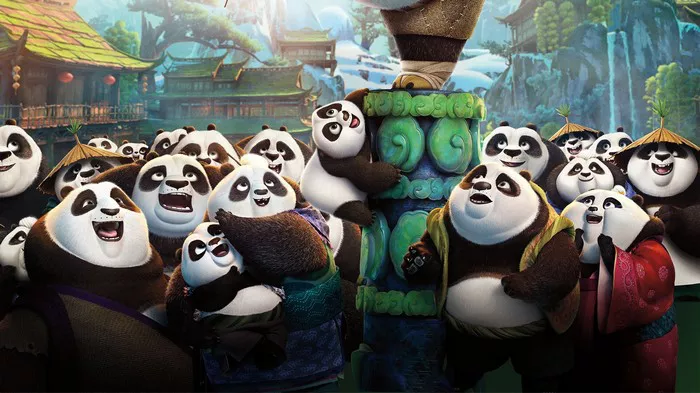Kung Fu, the ancient Chinese martial art, is renowned for its diverse styles, each inspired by the movements and characteristics of animals. From the graceful movements of the crane to the swift strikes of the tiger, these styles reflect the natural world and embody the principles of balance, strength, and agility. Among the most intriguing of these styles is the myth of Panda Style Kung Fu, purportedly inspired by the beloved giant panda. In this article, we delve into the origins of Panda Style Kung Fu, separating fact from fiction and exploring its significance in the world of martial arts.
The Myth of Panda Style Kung Fu
1. A Legend Shrouded in Mystery
Panda Style Kung Fu, also known as “Da Xiong Mao Quan” in Mandarin, has long captured the imagination of martial arts enthusiasts around the world. According to legend, this unique style of Kung Fu was inspired by the movements and behavior of the giant panda, one of China’s most iconic and beloved animals. Tales of masters observing pandas in the wild and emulating their techniques have fueled the myth of Panda Style Kung Fu for centuries.
2. Mythical Characteristics and Techniques
Proponents of Panda Style Kung Fu claim that the martial art incorporates elements of the panda’s demeanor, including its seemingly gentle yet powerful movements, as well as its ability to adapt and flow with the environment. Techniques purportedly include strikes that mimic the panda’s powerful paw swipes, evasive footwork reminiscent of the panda’s agility, and defensive maneuvers inspired by the animal’s protective instincts.
3. Pop Culture and Commercialization
The myth of Panda Style Kung Fu has been perpetuated and popularized through various forms of media, including films, television shows, and literature. Characters such as Po from the “Kung Fu Panda” franchise have further cemented the association between pandas and martial arts in the public consciousness, leading to widespread fascination and curiosity about the existence of Panda Style Kung Fu.
Separating Fact from Fiction
1. Historical Evidence and Documentation
Despite the enduring allure of Panda Style Kung Fu, there is limited historical evidence to support its existence as a formalized martial art. While anecdotes and legends abound, reputable sources within the martial arts community have questioned the authenticity of Panda Style Kung Fu, citing a lack of verifiable documentation and lineage tracing back to ancient masters.
2. Challenges of Emulating Animal Movements
While it is true that many traditional styles of Kung Fu draw inspiration from animals, such as the crane, tiger, and snake, the notion of emulating the movements of a panda presents unique challenges. Unlike the more overtly aggressive or agile animals commonly associated with martial arts, the panda’s movements are characterized by a seemingly slow and deliberate pace, making it less conducive to emulation in combat scenarios.
3. Ethical Considerations and Conservation Efforts
As the giant panda is a vulnerable species native to China, there are ethical considerations surrounding the commercialization and exploitation of its image and behavior for martial arts purposes. Some critics argue that perpetuating the myth of Panda Style Kung Fu for commercial gain may inadvertently contribute to the commodification of wildlife and detract from conservation efforts aimed at protecting endangered species.
The Legacy of Panda Style Kung Fu
1. Symbolism and Cultural Significance
While the existence of Panda Style Kung Fu may remain a matter of debate, its symbolism and cultural significance endure as a testament to the enduring fascination with the giant panda and its place in Chinese culture. The panda serves as a national symbol of China, representing peace, harmony, and resilience, qualities that resonate deeply with the principles of martial arts.
2. Inspiration for Creativity and Innovation
Regardless of its historical veracity, the myth of Panda Style Kung Fu continues to inspire creativity and innovation within the martial arts community. Artists, filmmakers, and martial artists alike draw inspiration from the imagery and mythology surrounding pandas, incorporating elements of their behavior and movements into their own practices and interpretations of Kung Fu.
3. Celebrating the Spirit of the Panda
Ultimately, whether or not Panda Style Kung Fu exists as a formalized martial art, its enduring legacy lies in the spirit of the panda itself – gentle yet powerful, resilient yet adaptable. As martial artists strive to embody the principles of balance, harmony, and strength, they pay homage to the spirit of the panda and the timeless wisdom it represents.
Conclusion: Exploring the Mythical Realm of Panda Style Kung Fu
Panda Style Kung Fu may remain a tantalizing myth shrouded in mystery, but its allure continues to captivate the imagination of martial arts enthusiasts and wildlife enthusiasts alike. Whether inspired by legends, pop culture, or the inherent symbolism of the giant panda, the myth of Panda Style Kung Fu serves as a reminder of the enduring connection between humans and the natural world.
As we navigate the realms of myth and reality, let us not lose sight of the lessons and inspiration that the panda and its mythical counterpart impart. Whether in the dojo or in the wild, the spirit of the panda lives on, reminding us of the beauty, strength, and harmony that can be found in the world around us.


